
Jean-Yves Repussard and his Actros with hydraulic auxiliary drive
Vehicle & Technology
Jean-Yves Repussard and his co-workers deliver animal feed. The Actros with a hydraulic auxiliary drive is a valuable member of their team.
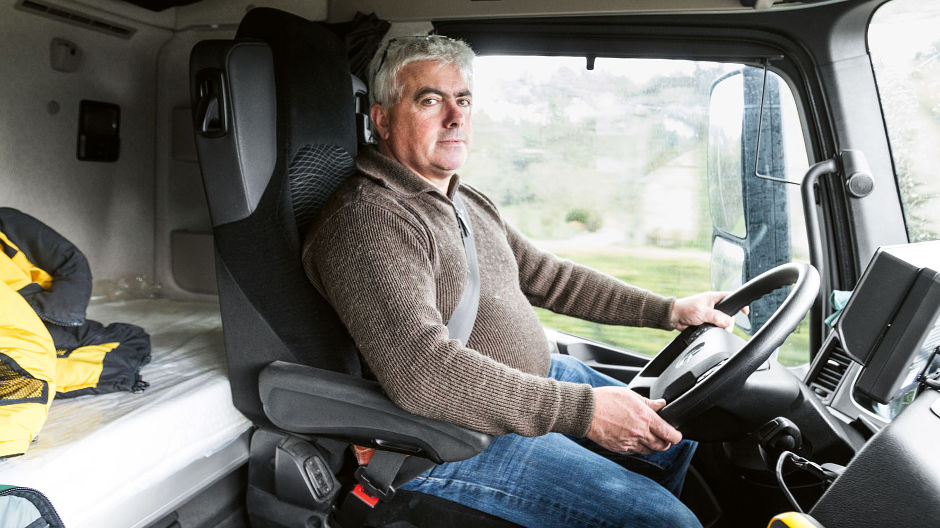
Although 18 drivers work for Jean-Yves Repussard now, he still makes deliveries himself.
Jean-Yves Repussard is a true man of the wide, open country. However, after attending agricultural college, he felt no inclination to work on a farm. He wanted to drive a truck instead. But he still wanted to be in the country. For ten years, he picked up chickens from poultry farmers. Then he was able to buy his own tractor vehicle. Twenty-five years later, his company can boast a fleet in Sablé-sur-Sarthe in north-western France with nine semi-trailer tractor units and eighteen drivers working for him.
However, this doesn't prevent Jean-Yves from going on tours himself every day. "I wanted to reduce night work and see my children more often than just on the weekends," he says. Today he delivers animal feed to farms with his tanker trailer.
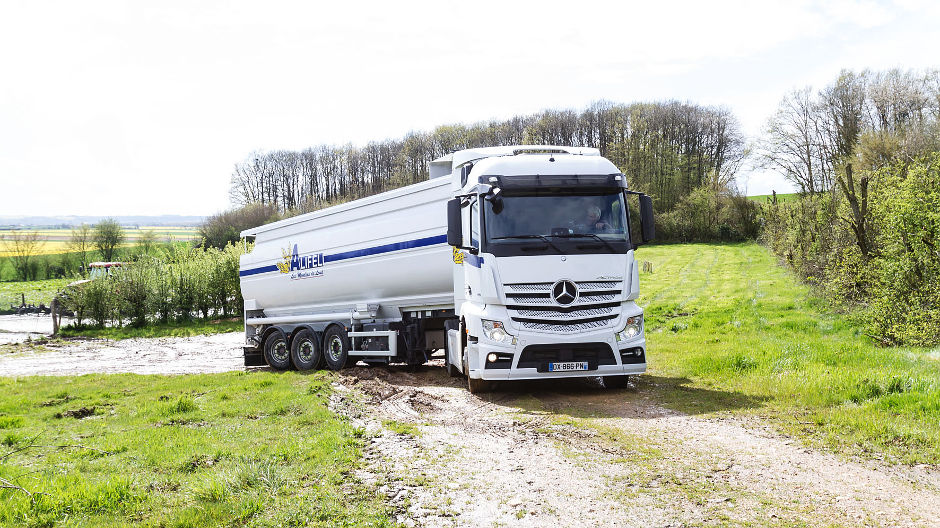
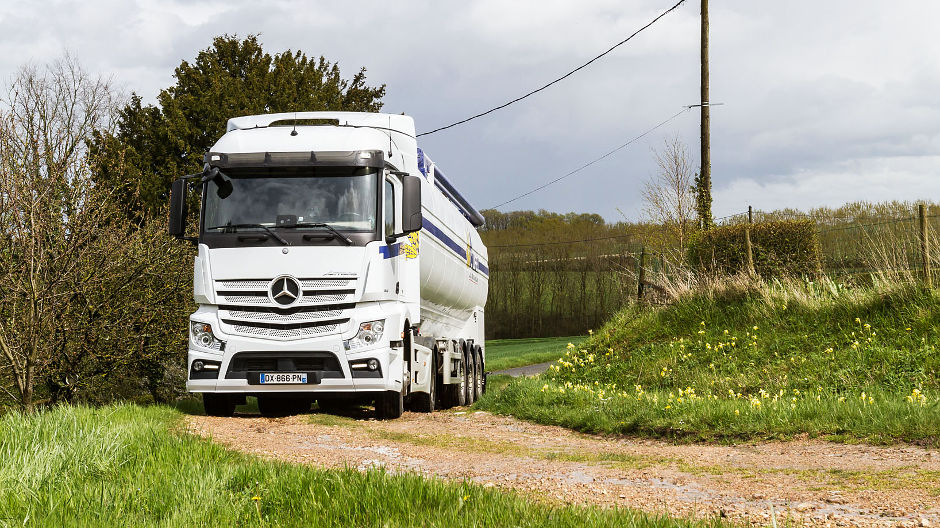
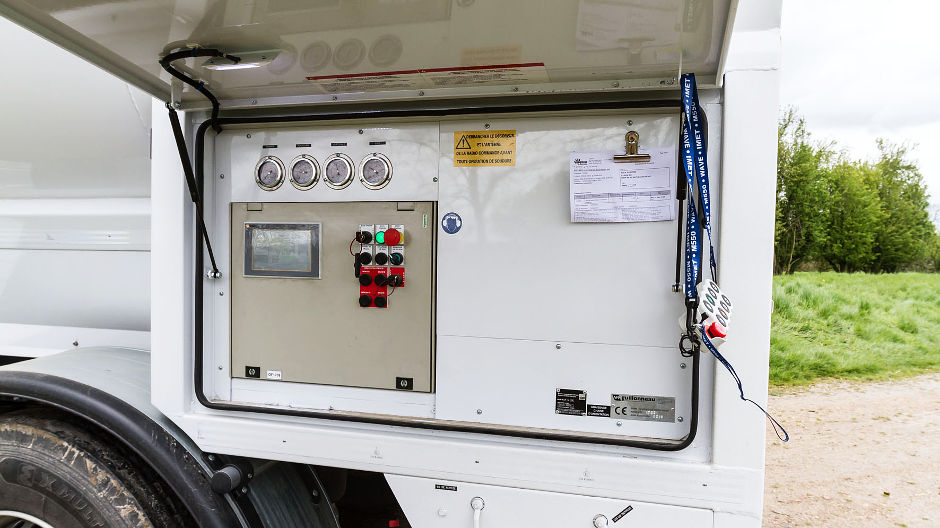
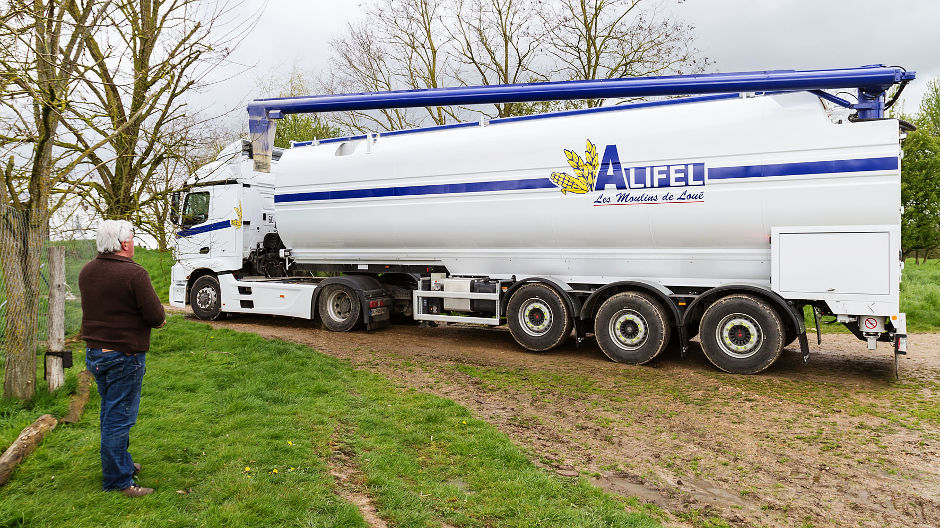
The white Actros 1848 with the narrow blue stripe on either side has
no problem climbing the steep track from the main road to the poultry
farm. This was Jean-Yves Repussard’s last customer of the day. The
climb would have been hard for a normal semitrailer, but not for
Jean-Yves' latest acquisition, equipped as it is with an auxiliary
hydraulic drive. "With this Actros I can easily master such steep
gradients", explains Jean-Yves about his investment. "In
some difficult places, I sometimes didn't have enough traction to move
from the spot."
To demonstrate this, Jean-Yves Repussard presses a button in the middle of the dashboard. A front axle symbol appears on the central display. If you depress the accelerator pedal, the symbol changes from white to blue. This means the auxiliary drive is activated. Oil is injected into the wheel hub motors at high pressure, providing an additional output of up to 40 kW. The tank trailer remains manoeuvrable on the muddy ground and takes the climb without complaint.
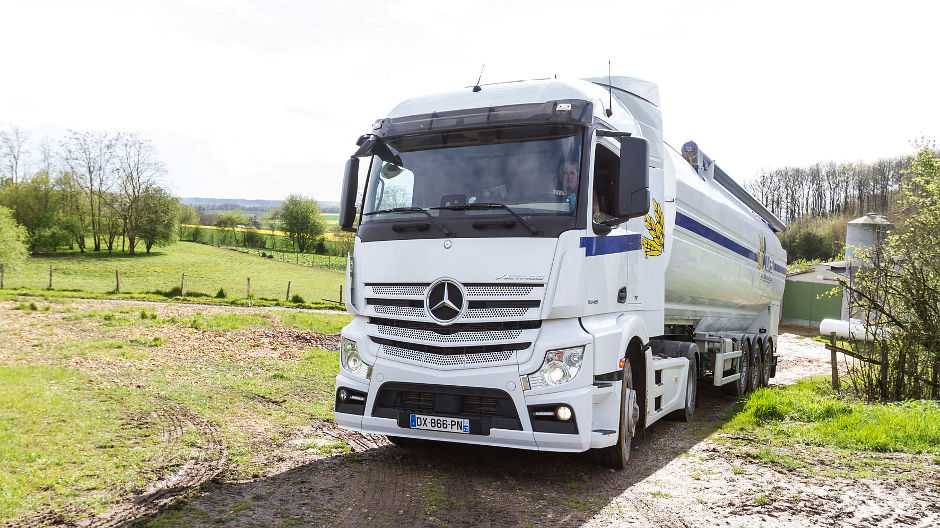
Jean-Yves used to have to drive a four-axle vehicle to approach the
hard-to-reach farms. This entailed a whole series of disadvantages:
"It was very thirsty and with its 16-tonne payload, it was not
very profitable." Instead of the 40 litres per 100 km of the
four-axle vehicle, the Actros consumes only 32 litres.
A further advantage of the system: the tanker can load ten more tons on each tour. Thanks to the new silo semitrailer, the vehicle combination hasn't lost much manoeuvrability compared to the previous four-axle truck, as it has a lifting axle and steering axles at the front. This new tank also has eight chambers so that Jean-Yves can supply several farms per tour. The vehicle also has a hydraulically operated conveyor screw to fill the poultry farmers' silos from above. "A computer controls the screw conveyor that takes the feed high up to the silo. It also controls the opening and closing of the compartments and their cleaning, so that all leftover feed can be removed, ensuring that the chicken feed is not mixed with the feed for the turkeys and vice versa," he explains.
Poultry farms function more or less automatically, similar to food processing companies. It is therefore rare that Jean-Yves meets the farmers there. It is all the more important that the tank trailer does not end up stranded on the access road – the fear that this may happen is a thing of the past thanks to the hydraulic auxiliary drive.
Photos: Hans Müller




Comment
Please log in to post a comment.
5 comments
Prachtige combinatie en een toffe oplegger met compartimenteringen
Distributie op langere afstand . super !
Prachtige combinatie en een toffe oplegger met compartimenteringen
Distributie op langere afstand . super !
Und mit so einem sauberen, weißen Auto durch den "Babb"...
Was ich nicht verstehe: Warum braucht ein 4-Achser so viel mehr Kraftstoff wie ein 5-Achssattelzug?
Gruß
Klaus
Und mit so einem sauberen, weißen Auto durch den "Babb"...
Was ich nicht verstehe: Warum braucht ein 4-Achser so viel mehr Kraftstoff wie ein 5-Achssattelzug?
Gruß
Klaus
Und in Deutschland wird seit eh und je Futtermittel, Zement und ähnliches mit Druckluft geblasen .
Und in Deutschland wird seit eh und je Futtermittel, Zement und ähnliches mit Druckluft geblasen .
So lässt sichs angenehm arbeiten 😊
So lässt sichs angenehm arbeiten 😊